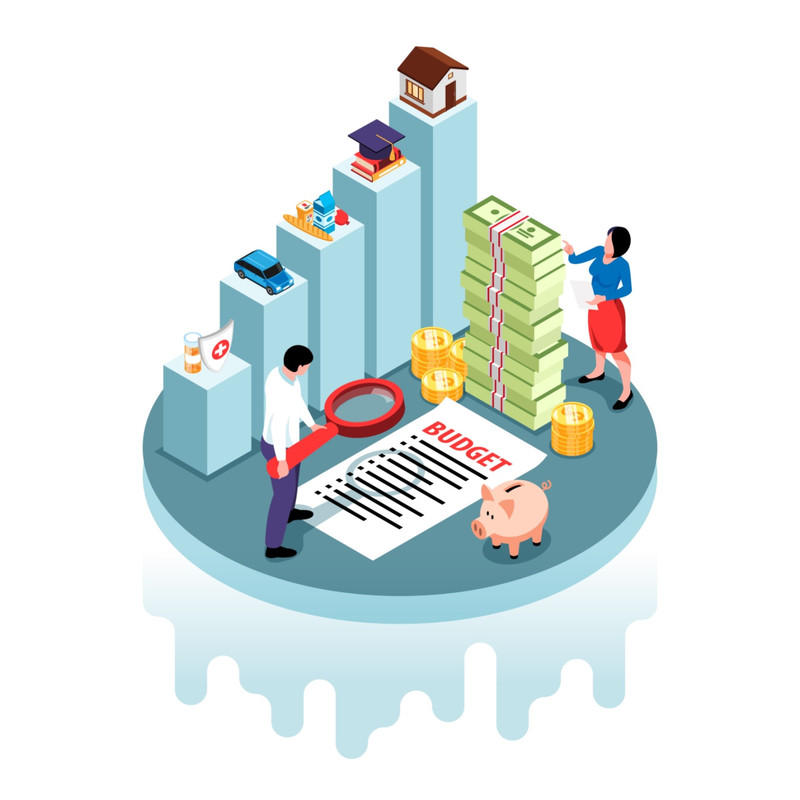Amid the unpredictability of the financial world, there's a question that often lingers: can you truly build credit that can weather economic uncertainties, job losses, or inflation? The answer is a definitive "yes." Drawing from a decade of experience in the realm of credit repair, I've encountered a multitude of explanations for bad credit, often attributed to various challenging circumstances. However, I'm here to share with you that there are not one, but two powerful strategies that you can start implementing right away to fortify your credit against life's unexpected twists and turns.
Let's delve into these strategies: the 50/30/20 rule and the creation of an emergency fund. These two financial pillars are your allies in maintaining a robust credit profile, regardless of the challenges that come your way. In this blog, we'll explore how these straightforward yet effective approaches can assist you in safeguarding your credit, providing you with a sense of financial security that can withstand whatever life throws at you.
Contents:
Understanding the Fragility of Credit
The 50/30/20 Rule: Budgeting for a Secure Future
The Role of Budgeting in Credit Protection
Building an Emergency Fund: Your Financial Lifesaver
Emergency Fund vs. Credit Damage: A Clear Choice
Conclusion: Ensuring Your Credit's Future Resilience
Understanding the Fragility of Credit
Many individuals attribute their
At its core, the 50/30/20 rule simplifies budgeting by breaking down your income into three categories: Essentially, this portion of your income (50%) should be allocated to necessities. These are your non-negotiable expenses, including housing, utilities, groceries, transportation, and insurance. Your ability to cover these costs ensures your financial security and peace of mind. Now, let's talk about the fun partâ€"30% of your income can be spent on your wants and desires. This category covers things like dining out, entertainment, hobbies, and non-essential shopping. It's your chance to enjoy life without jeopardizing your financial stability. The final piece of the puzzle, 20% of your income, should be dedicated to savings and paying off debt. This includes contributions to your emergency fund, retirement savings, and paying down outstanding loans. It's your financial safety net for the future. Now, let's discuss how to put the 50/30/20 rule into action: Begin by calculating your monthly income and listing all your expenses. This will give you a clear picture of where your money is going. Divide your income into the three categories according to the rule. Ensure that 50% goes to essentials, 30% to wants and desires, and 20% to savings and debt repayment. If your current spending doesn't align with the 50/30/20 rule, it might be time to make adjustments. This could involve reducing discretionary spending or finding ways to increase your income. Why is the 50/30/20 rule such a valuable tool for your financial journey? By following this rule, you are building a financial cushion. The 20% allocated to savings and debt repayment ensures that you are prepared for unforeseen expenses or job loss. The rule encourages responsible spending and saving habits. Over time, this can lead to improved credit scores, reduced debt, and a brighter financial future. In conclusion, the 50/30/20 rule is a game-changer for your financial security. It simplifies budgeting, encourages smart financial habits, and ensures you're prepared for whatever financial challenges come your way. Implement this rule, and you're on your way to a secure and prosperous future. budgeting â€"how to effectively track your expenses: Organize your expenses into categories, such as housing, groceries, transportation, and entertainment. This helps you see where your money is going at a glance. Utilize budgeting apps and software to streamline the process. These tools can automatically categorize expenses and provide insights into your spending habits. Don't view your budget as static. Regularly review your expenses and adjust your budget as needed. This allows you to adapt to changing financial circumstances and priorities. When economic challenges arise, your well-structured budget becomes your trusted companion: Your budget and the savings it represents provide you with financial resilience. You can navigate unexpected expenses, job loss, or medical emergencies without risking your credit score. A budget guides your financial decisions. It prevents impulsive spending and ensures that every financial choice you make aligns with your long-term goals and credit protection. emergency fund acts as your financial lifesaver. In this section, we'll explore the concept of an emergency fund, how to determine the right fund size for your unique situation, and the numerous benefits of having a well-funded safety net in place. First things first, what exactly is an emergency fund? An emergency fund is a dedicated savings account or pool of money set aside for unforeseen financial emergencies. These can include medical bills, car repairs, job loss, or any unexpected expense that could disrupt your financial stability. Having an emergency fund a crucial component of your financial plan? With a well-funded emergency fund, you're less reliant on credit cards or loans when emergencies strike. This reduces the risk of accumulating high-interest debt. An emergency fund safeguards your credit score. It ensures that unexpected expenses don't lead to missed payments or maxed-out credit lines, which can harm your credit history. Knowing you have a financial safety net in place reduces stress and anxiety. You can face unexpected challenges with confidence, knowing you're financially prepared. In conclusion, an emergency fund and credit resilience. Through real-life scenarios and practical advice, we'll explore the undeniable advantages of having an emergency fund to prevent emergency fund provides peace of mind. You don't have to worry about how to cover unexpected expenses, which significantly reduces financial stress and anxiety. Having an emergency fund allows you to avoid accumulating high-interest debt. This is a crucial step in breaking the cycle of debt that can harm your credit history. Building and maintaining an emergency fund to prevent the temptation to dip into it for non-emergencies. Automate your savings to ensure regular contributions. The choice between an credit damage is clear. An emergency fund serves as your financial shield, preventing credit harm, reducing stress, and breaking the debt cycle. By understanding the real-life scenarios, the advantages it offers, and addressing common challenges, you're taking a substantial step towards financial security and credit resilience. In summary, the foundation for ensuring your credit's future resilience is a dynamic duo: the 50/30/20 rule and a robust 50/30/20 rule simplifies budgeting by dividing your income into three categories. It ensures that 50% of your income goes to essentials, 30% for wants and desires, and 20% for savings and debt repayment. By adhering to this rule, you establish a financial plan that guides responsible spending and savings, ultimately leading to improved credit scores and long-term financial well-being. An 50/30/20 rule with a well-funded 50/30/20 rule, you're steering your financial ship in the right direction, while your
Understanding the 50/30/20 Rule
The Essentials (50%)
Wants and Desires (30%)
Savings and Debt Repayment (20%)
Creating a 50/30/20 Budget
Track Your Income and Expenses
Allocate Your Income
Adjust Your Lifestyle
The Rule's Role in Financial Stability
Preparedness for the Unexpected
Long-Term Financial Health
The Role of Budgeting in Credit Protection
Create Categories
Use Technology
Regularly Review and Adjust
Facing Economic Challenges with Confidence
Financial Resilience
Smart Decision-Making
Understanding the Emergency Fund
Financial Safety Net
Peace of Mind
Financial Independence
Protection for Your Credit
Reduced Stress
Breaking the Debt Cycle
Common Challenges and Solutions
Conclusion: Ensuring Your Credit's Future Resilience
Building an Emergency Fund: Your Financial Lifesaver

